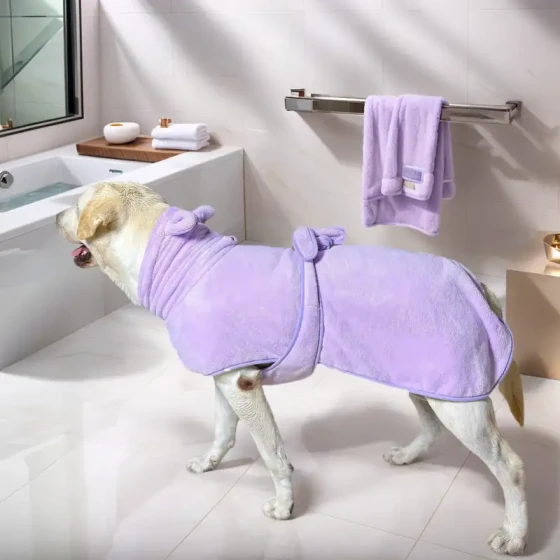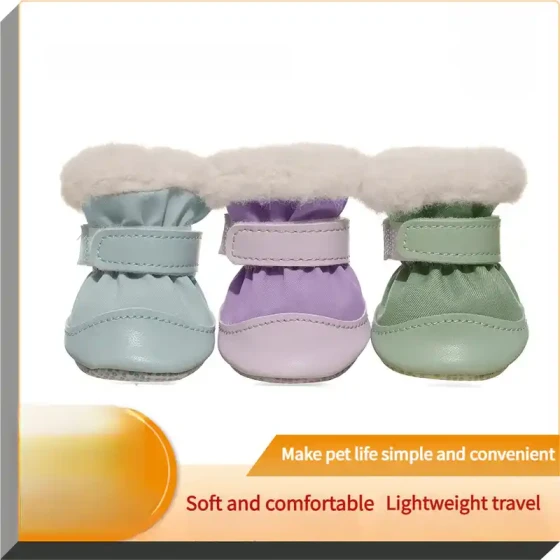What Are the Precautions for Traveling with Dogs?
Nowadays, many pet owners who raise dogs not only travel by themselves but also bring their own dogs along. One person and one dog accompany each other traveling across the country, which sounds very romantic. However, it is essential to be well prepared before traveling with your dog, or accidents can easily happen on the road. Today, the editor from Boqii Website will talk about what precautions to take when traveling with dogs. Let’s take a look together.

There are many preparations for traveling with your dog. First, you must confirm the travel destination; it is best to choose places with fewer people, such as non-urban cultural scenic spots or ecological parks with fewer visitors. This can avoid dogs becoming "excited" during the trip and possibly hurting other tourists. Then, you should put a homemade pet tag on your dog, and it must include the owner's home address and contact phone number, in case the dog gets lost during the trip.
In addition, you need to consider how to keep the dog calm while riding in the car (usually referring to private cars). Some dogs naturally enjoy car rides; for example, German Shepherds like fresh and stimulating experiences and are fearless. There are also some “car-sick dogs” that react strongly to car rides, such as Poodles. Therefore, you must train your dog to ride in the car before traveling so that they become familiar with the car environment.
The method to train a dog to ride in the car is: before each car ride, place some of the dog’s favorite treats and toys inside the car. Once the dog gets in, quickly secure its safety belt. After repeating this a few times, the dog will understand what to do when you open the car door. Of course, if the car's space is big enough, the dog can stay in its travel crate. This not only prevents the dog from jumping around and distracting you while driving but also greatly reduces the chance of the dog flying out of the window during emergency braking.
Finally, dog toys, medical records, water, and food should all be prepared before departure. Toys can relieve the dog’s boredom during the journey; medical records allow local veterinarians to make accurate diagnoses if needed. Water and food are the material basis for the dog’s safe travel. Stop feeding the dog six hours before departure and let it exercise more. If the dog has a history of car sickness, you can also ask the vet for pet motion sickness medicine to reduce discomfort.

When riding in the car, dogs may continuously pant out of excitement or frequently scratch the seats due to irritation from long-distance travel, which can damage even the most durable seats. At this time, you might as well lay some newspapers or old clothes and discarded blankets under the dog’s butt to protect the car and care for your dog at the same time.
During the journey, it is best to stop every so often to let the dog get out and take a breath. This allows the dog to enjoy the beautiful scenery along the way and can relieve the tension of riding in the car.
Some dogs like to bark loudly while in the moving car, which can affect your driving. Putting a mask on the dog is a good solution, and you can also play some pleasant music to distract the dog. Of course, if your dog is well trained, just a "stop" command will make the dog immediately quiet down.
Lastly, do not leave your dog alone in the car under any circumstances—this is a big taboo when traveling with dogs. Because dogs regulate their body temperature poorly, when the car is exposed to direct sunlight, the dog will become restless. Applying a sunshade sticker on the car window can make the dog much more comfortable inside. If you forget your dog in the car, it could be life-threatening at any moment.
After the journey ends, you might start thinking about bathing your dog even before entering the home. Actually, there’s no need to rush. A long trip will have exhausted your dog, so the best practice after returning home is to let your dog sleep first and give it a warm bath the next day. You can also take the opportunity to rest yourself, reducing your own burden. If you worry about oversleeping and the dog roaming around making a mess after waking, just let the dog sleep overnight in its crate. A completely exhausted dog has no objection to this.

The above are the precautions for traveling with dogs. Hopefully, this can help everyone.


-560x560.webp)
